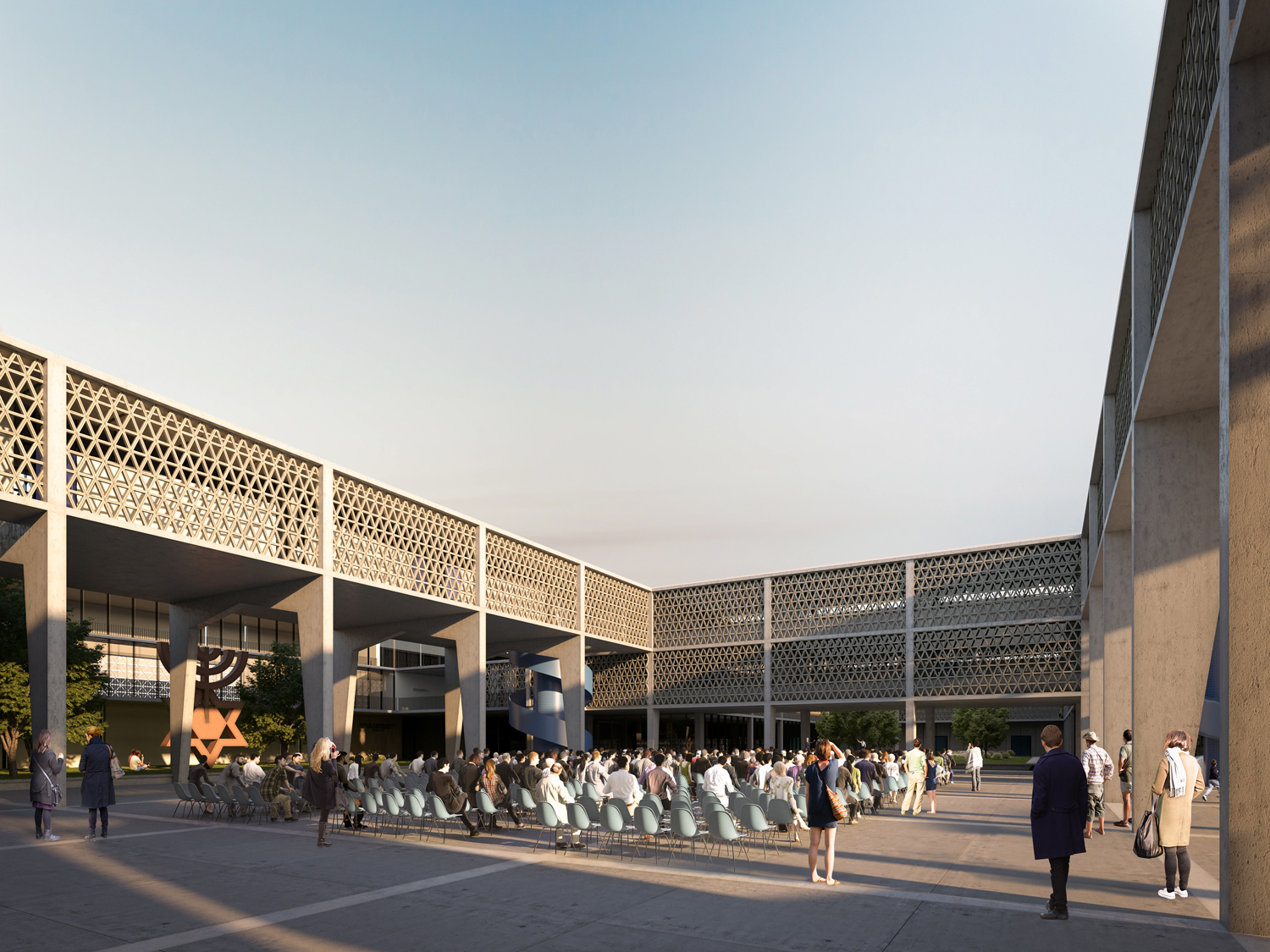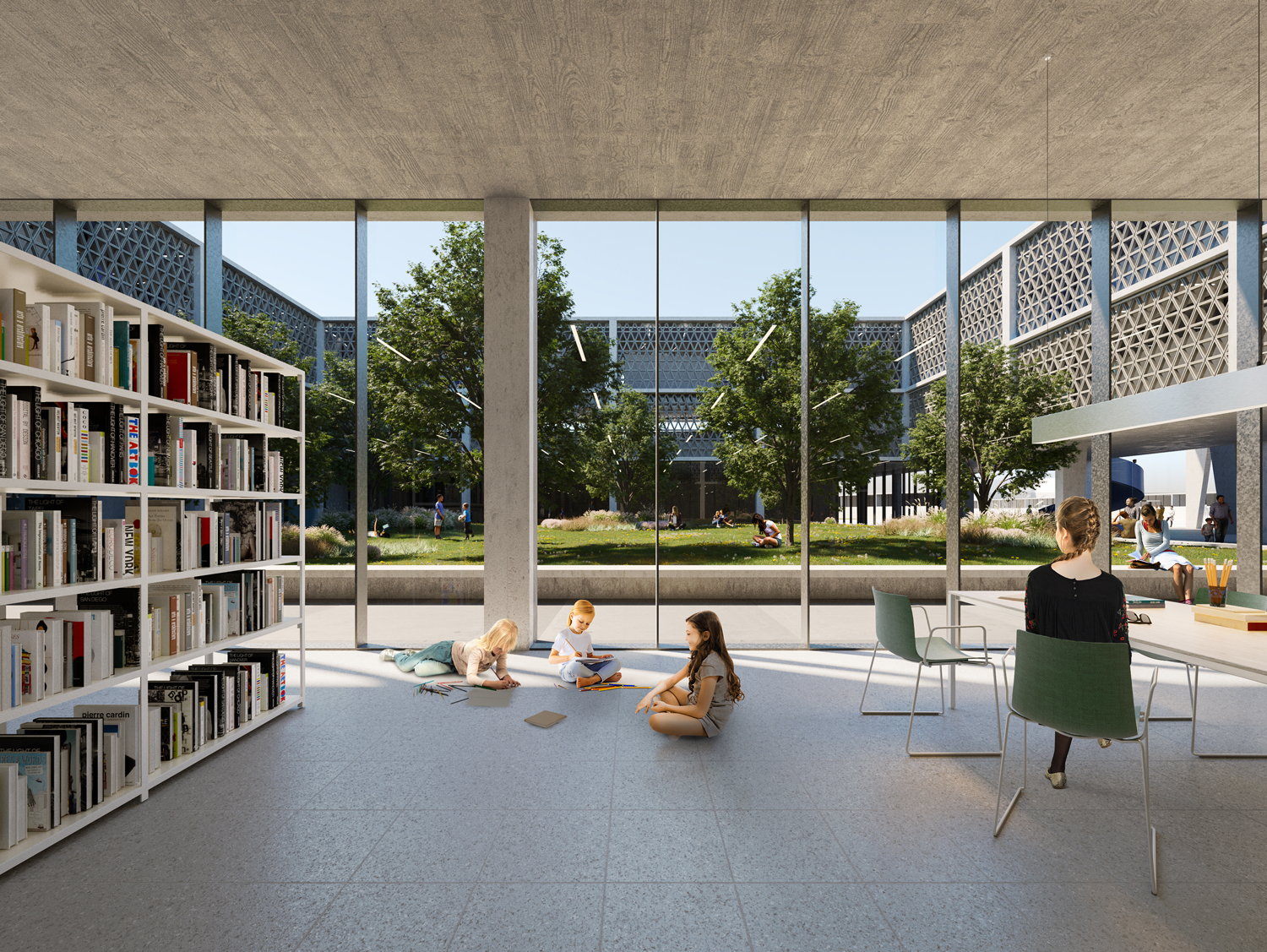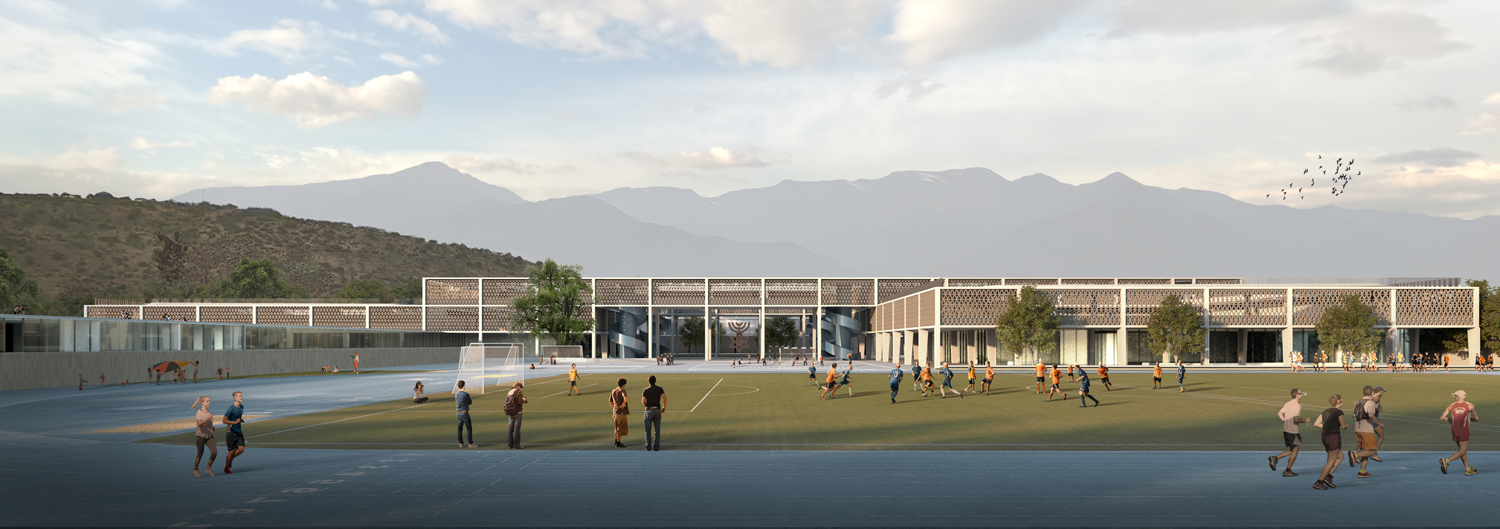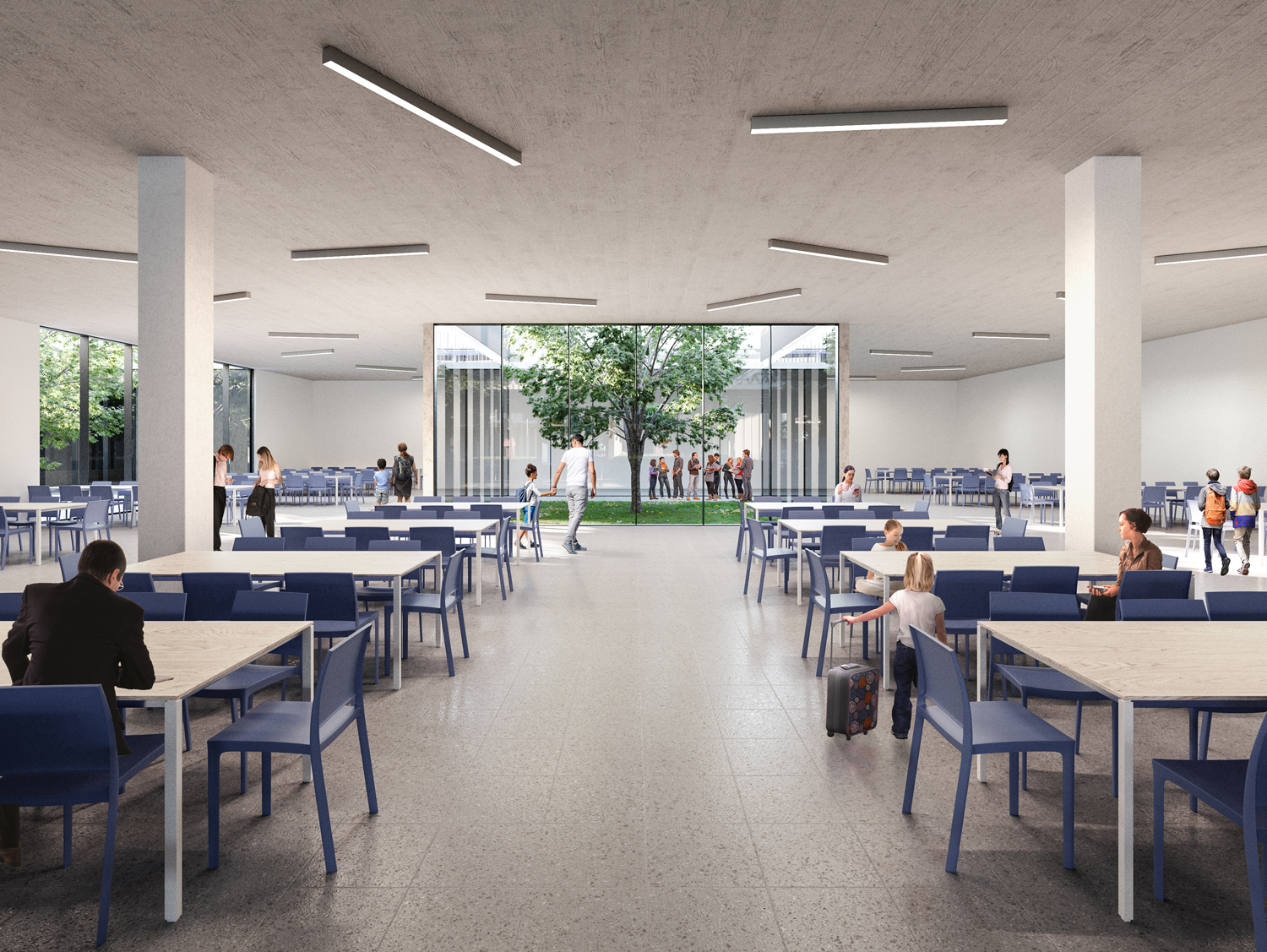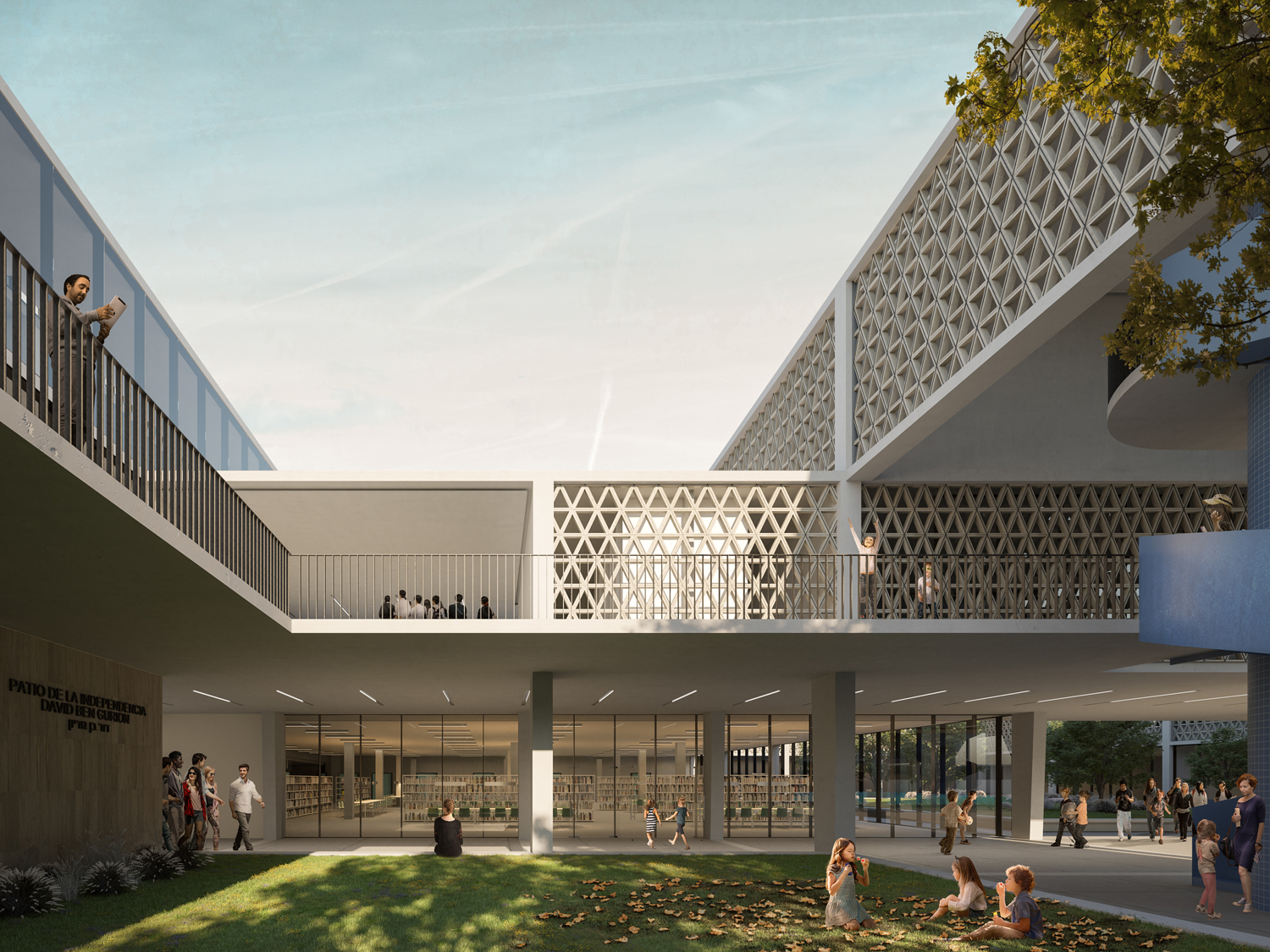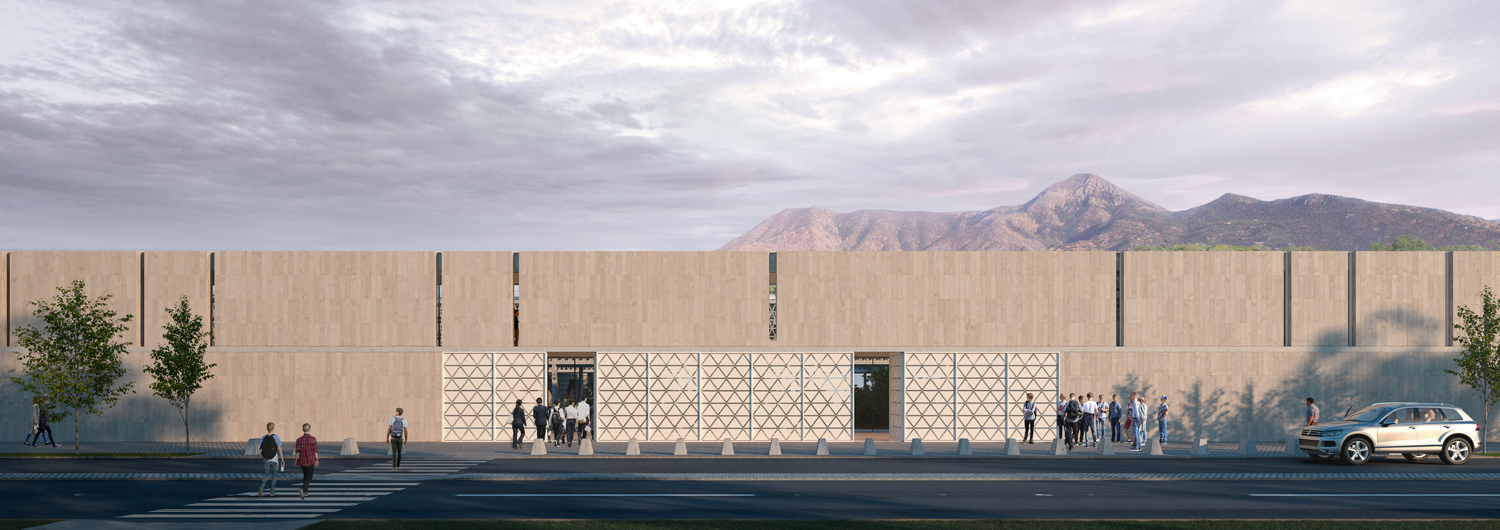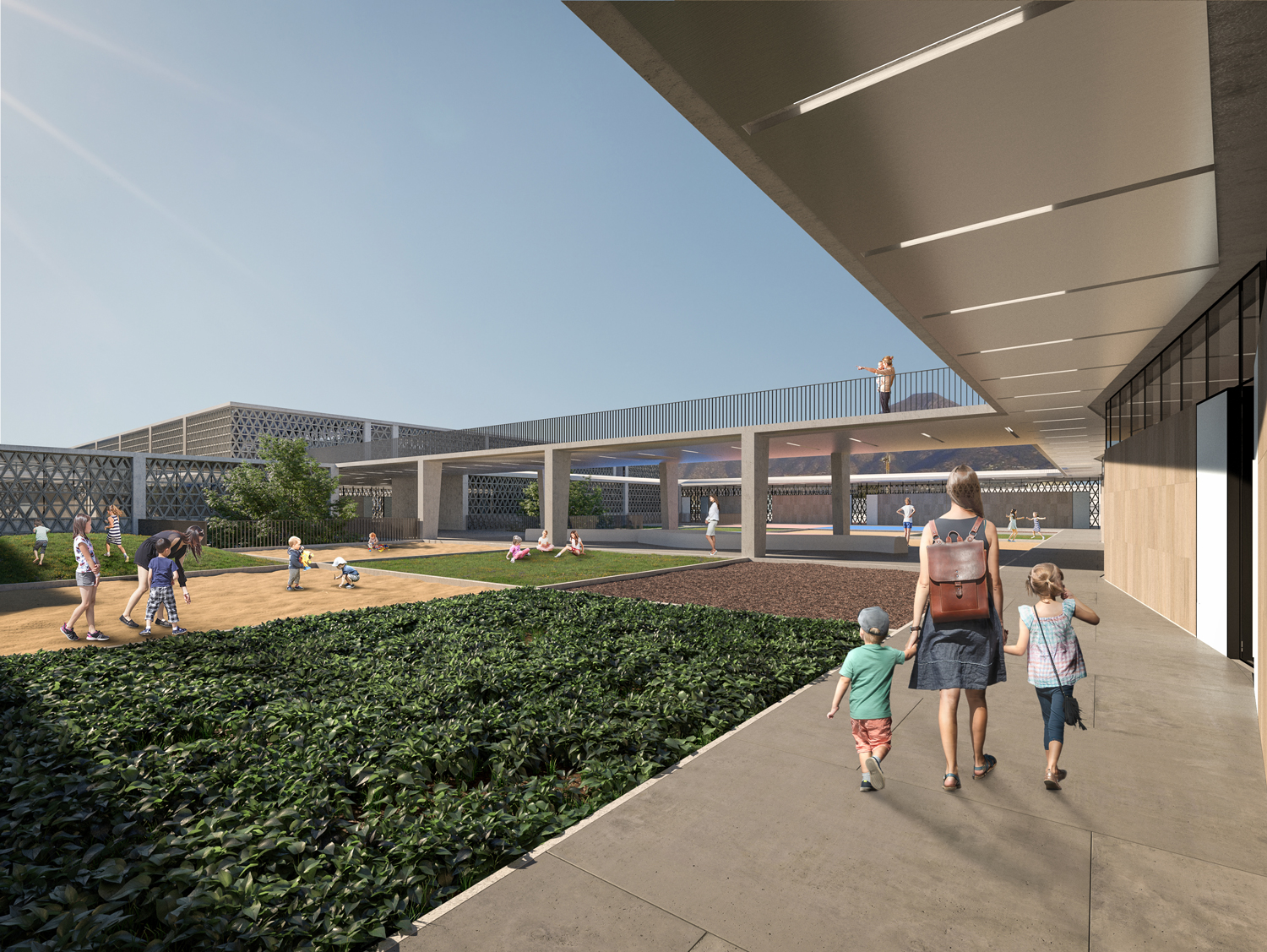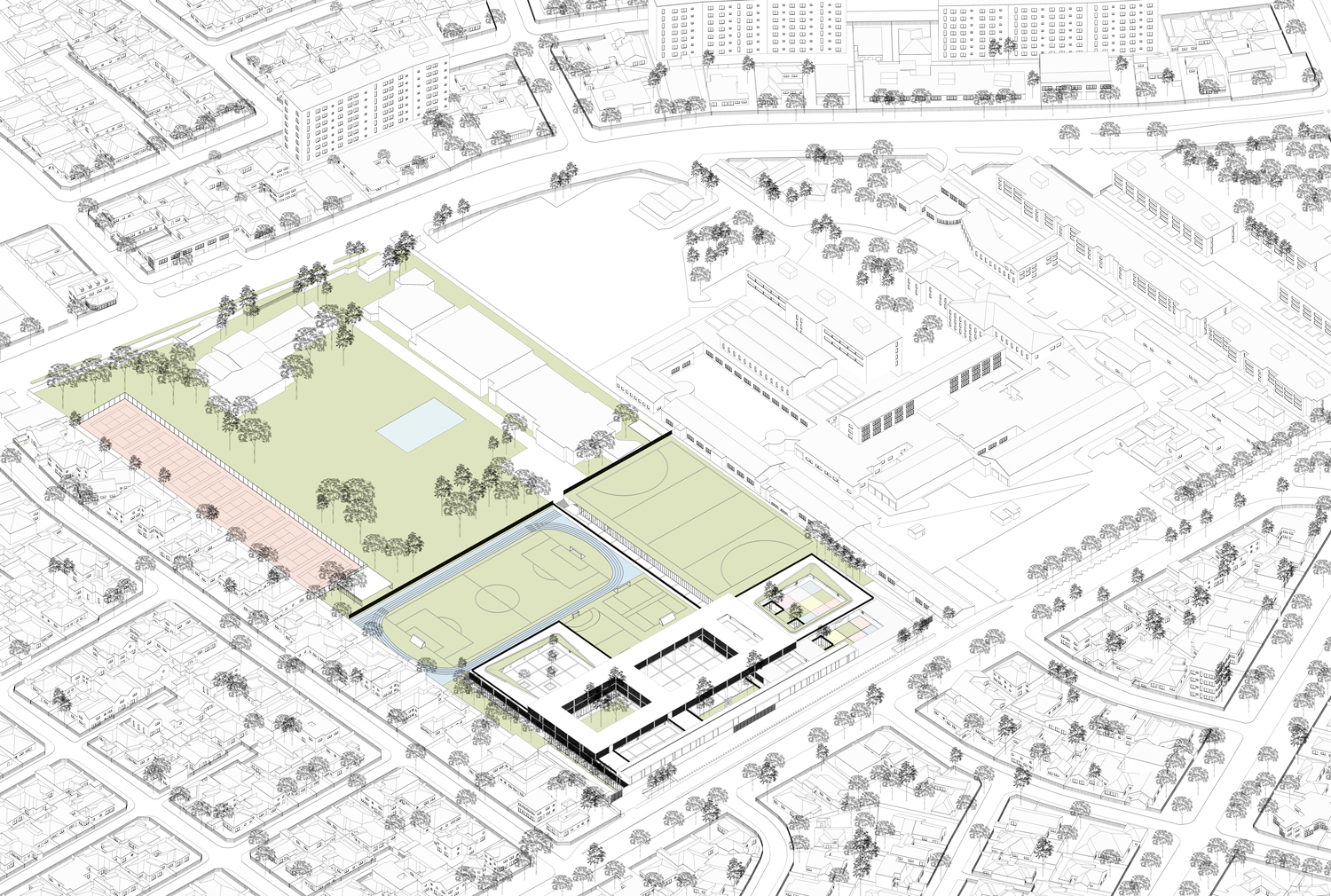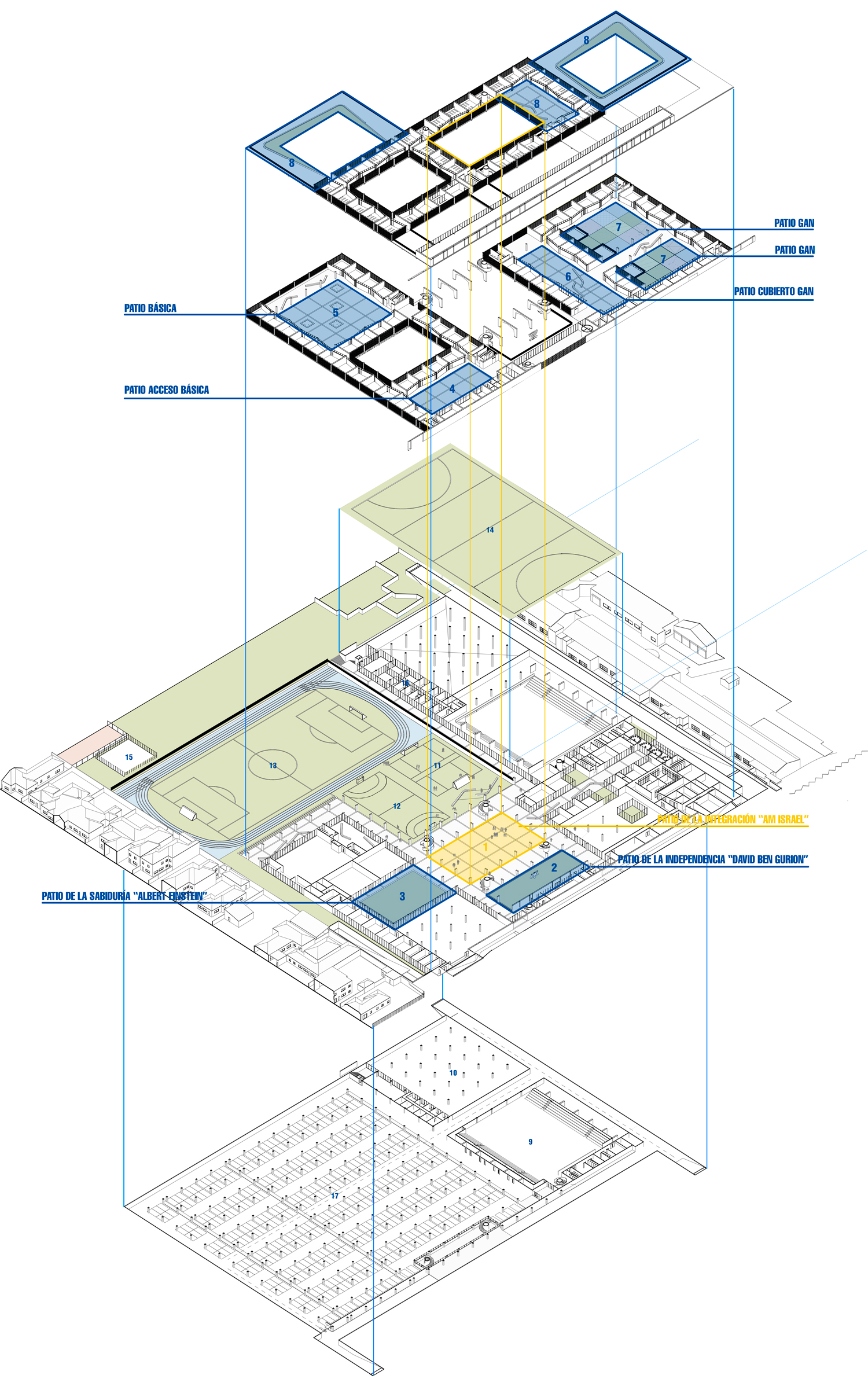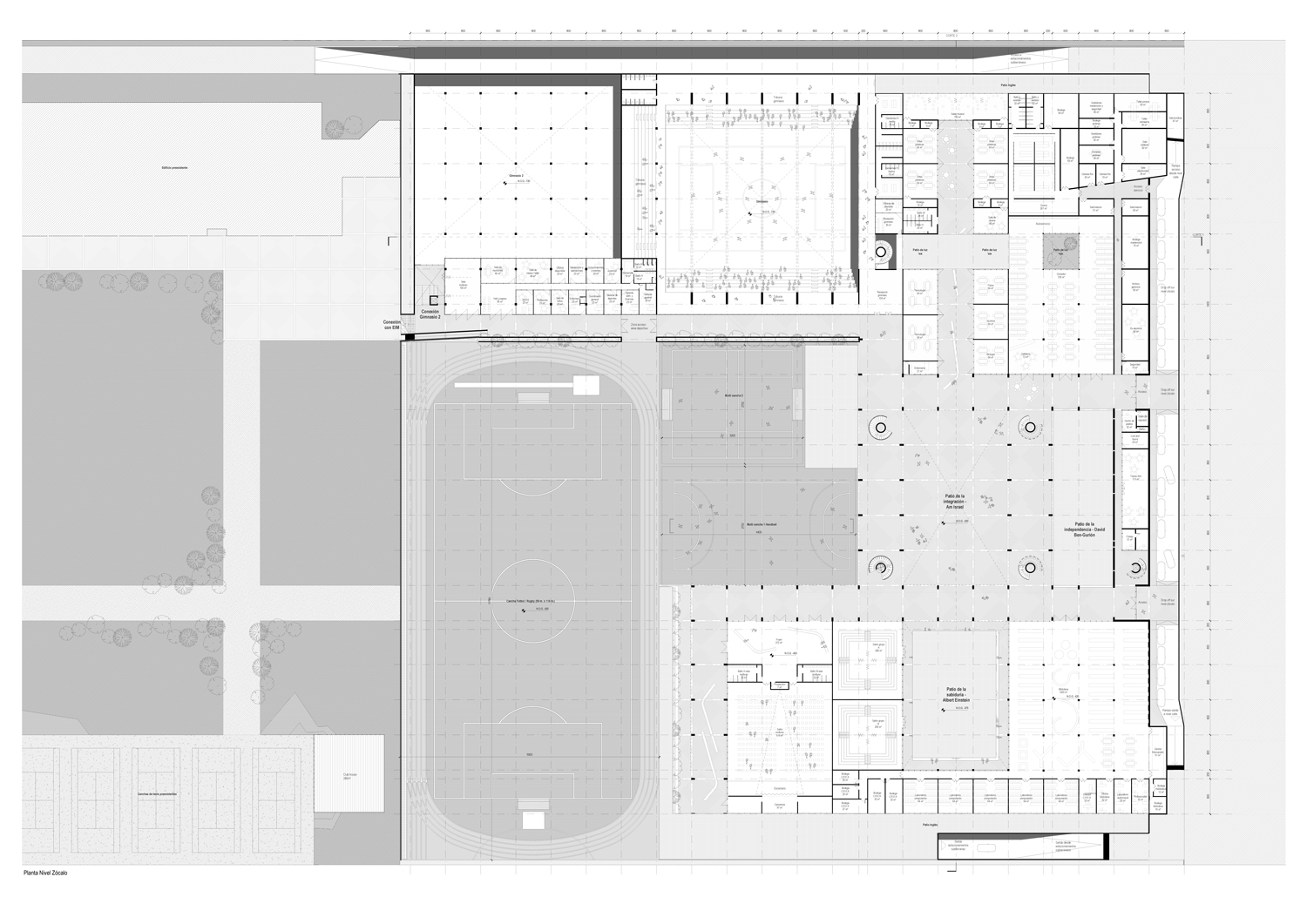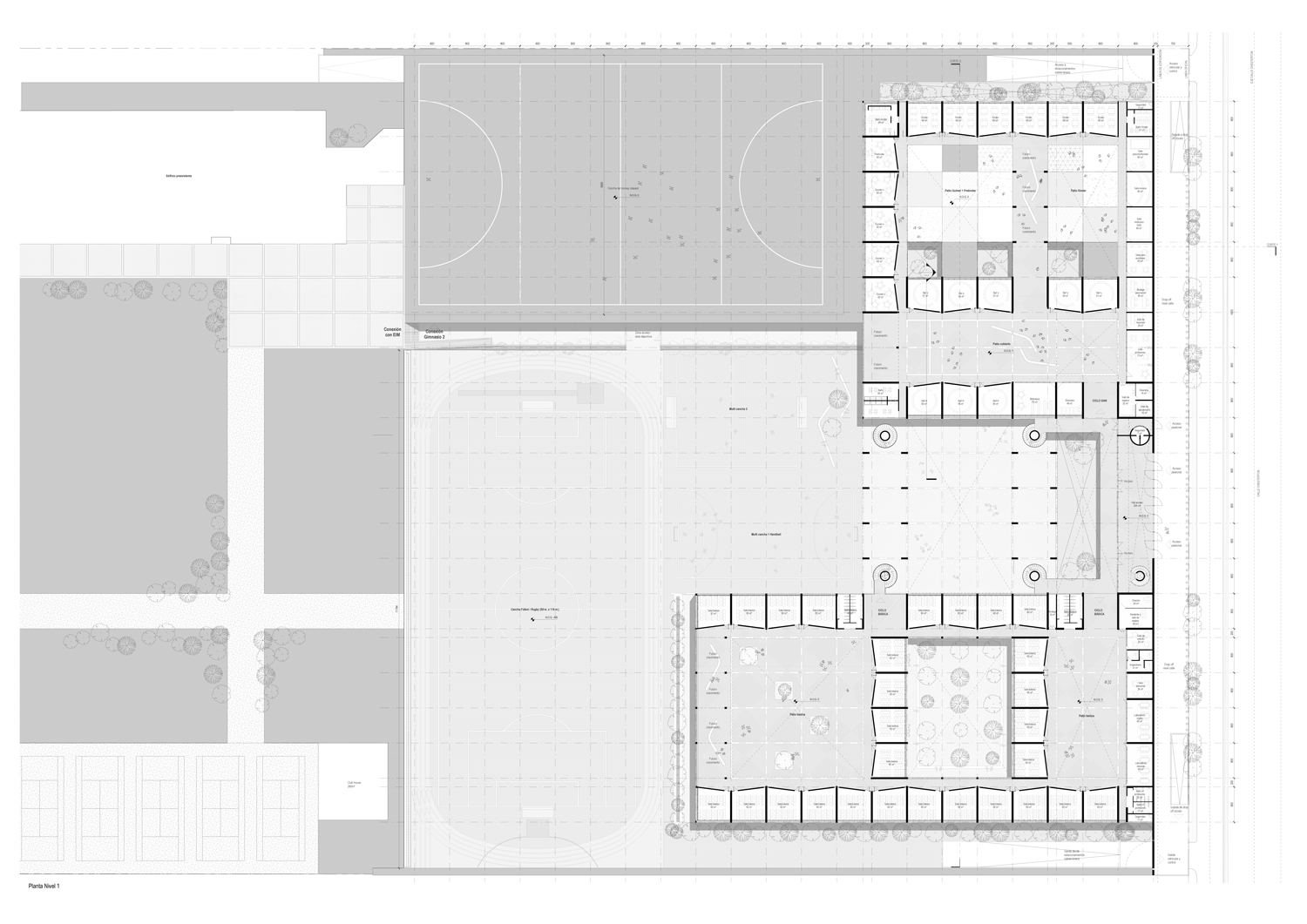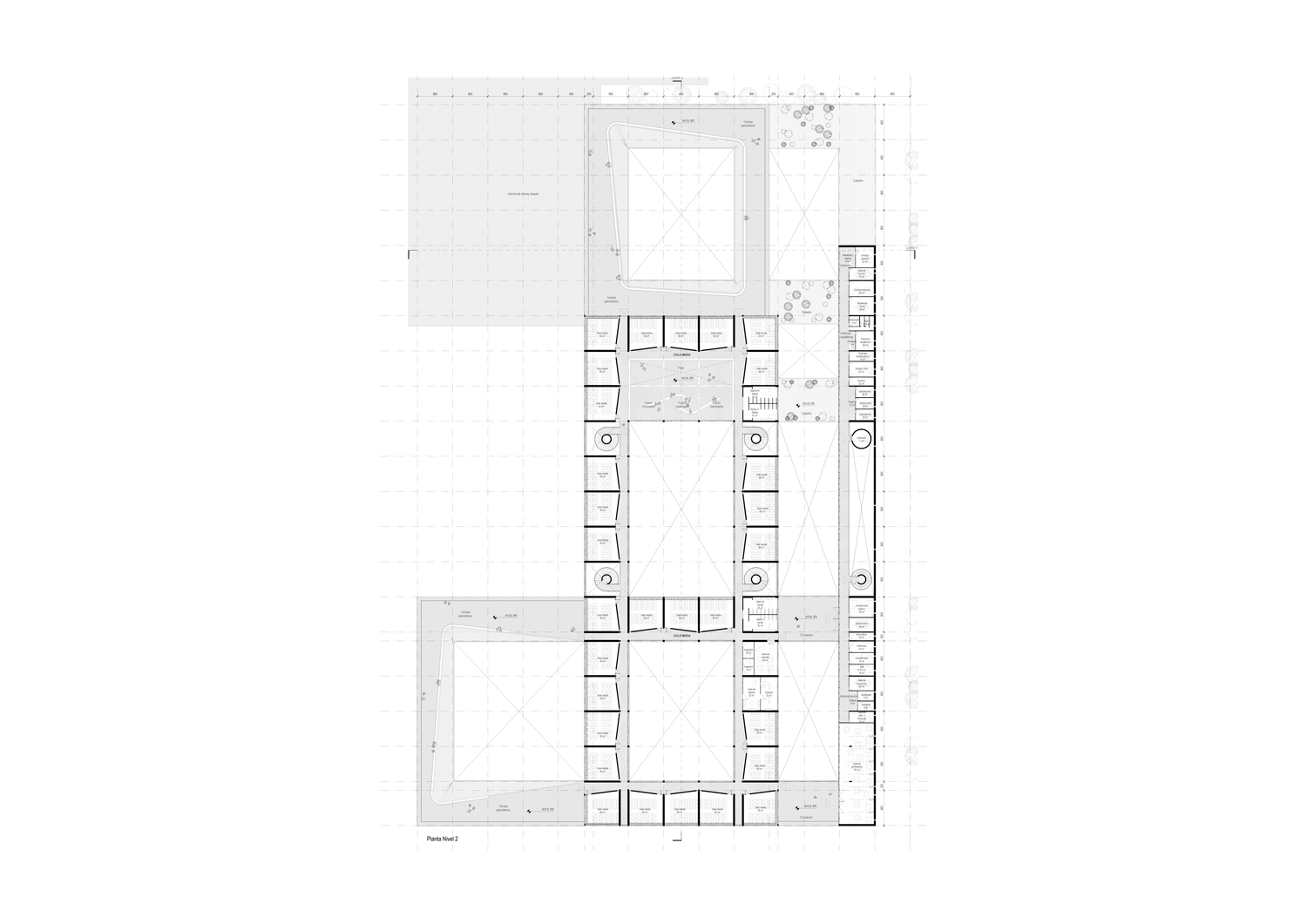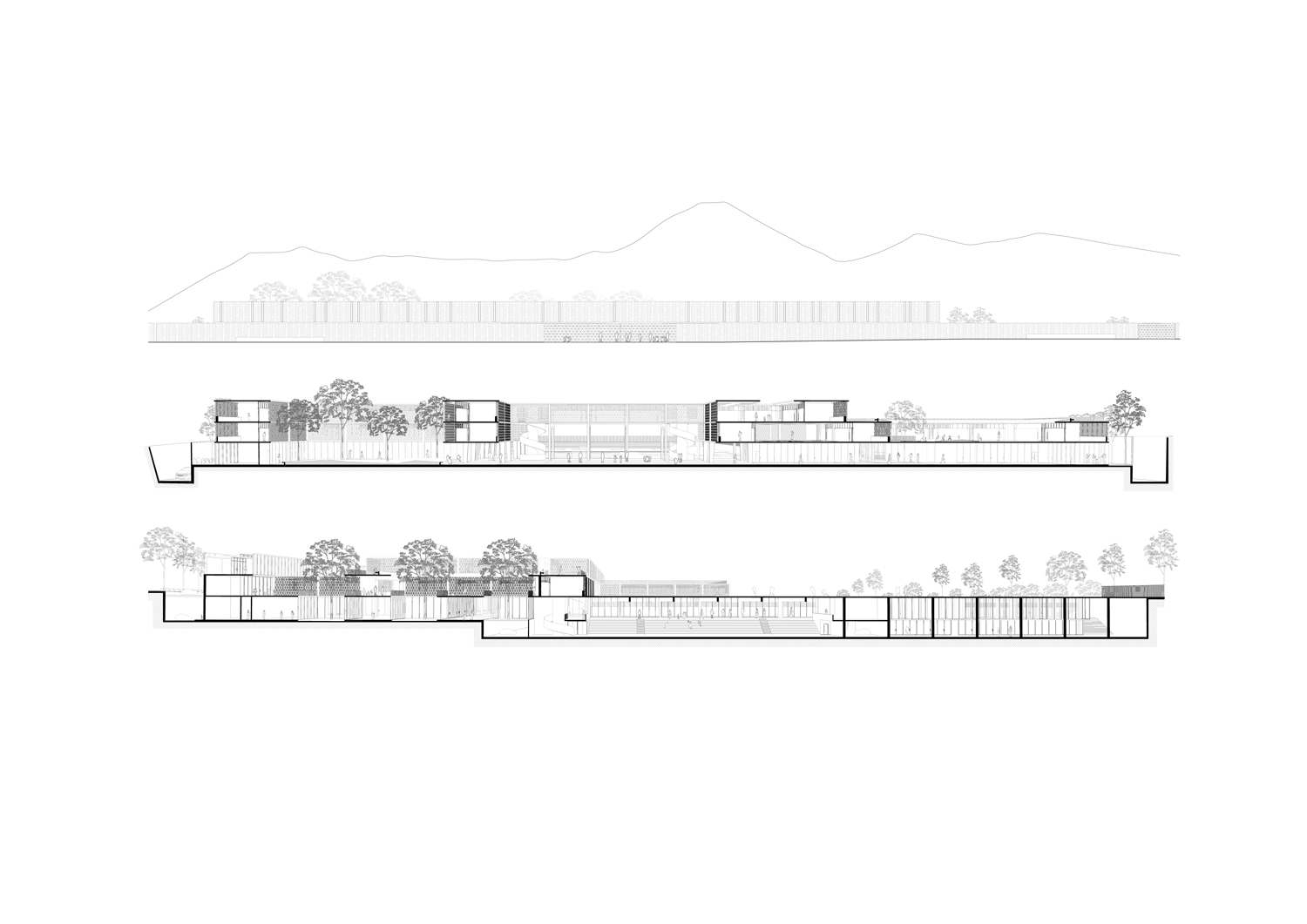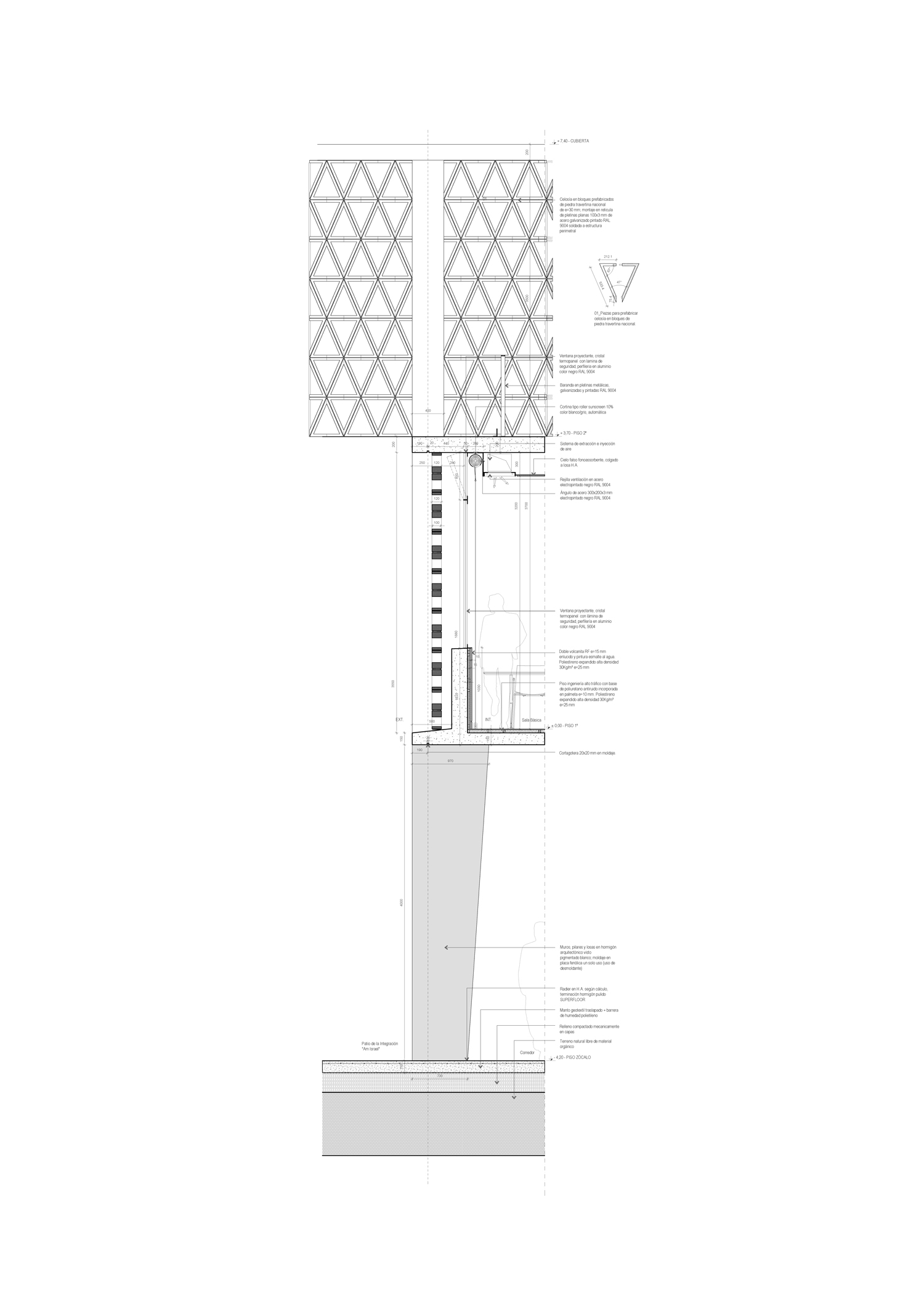☉ Instituto Hebreo is a finalist competition entry by Espiral MasFernández Arquitectos Asociados and Stefano Rolla for Corporación Educacional VAAD HAJINUJ de Chile in 2019. It is located in Santiago de Chile Chile in an urban setting. Its scale is large with a surface of 19.340 sqm a budget of 45.368.811 € and a ratio of 2.346 €/sqm. Key material is concrete. La imagineria collaborated as visualizer.
“Play is the highest stage of the child´s development…the purest, the most spiritual product of man at this stage, and it is at once the prefiguration and imitation of the total human life –of the inner, secret, natural life in a man and in all things. It produces, therefore, joy, freedom, satisfaction, repose within and without, peace with the world.” (Friedrich Froebel, 1826)
«The scenarios for play and leisure are constituted in the streets, squares and courtyards, where the furniture and any other object becomes a space for exploration, adventure, enjoyment and learning.» Through the architecture of playgrounds we understand the spatiality for the proposal of a school today. Pieter Brueghel’s painting «Children´s Games» (1525-1569), absolutely in force, represents children occupying a local square and playing, portraying a playful and necessary landscape for training, education and the integration of the community.
Atmosphere that makes the square relevant as an essential urban void for social gathering, friction and movement. At present, the representation of the Belgian painter can be revived in the school playground. Within the educational establishments, a protected place and a place where the child can complement their education in an outdoor space and conducive to learning and play.
The playground is not only developed to protect children from the dangers of the street, which increase as the 20th century advances, but its appearance brought with it the creation of the first play areas, in an attempt to improve; the health and cognitive development of children. Complemented, then, as spaces for resting, playing, thinking, moving and for the development of social skills, which increasingly relate to the versatility of spaces and the presence of nature.
Aldo Van Eyck (1918-1999), inspired by the photography of Nigel Henderson, creates a network of children’s spaces throughout post-war Amsterdam. The strategy of Van Eyck consisted in the repetitive use of simple elements that were suited to the place, generating a new model of playgrounds. Isamu Noguchi (1904-1988), in turn, worked using topography as another element of play, fostering the development of the child’s imagination and autonomy in an environment of full freedom of movement. Both proposals formulated in the use of the space and the material for the integration and the imagination of the child.
The New Hebrew Institute
The proposal poses to blur the boundary between the Hebrew Institute and the Israelite Stadium, seeking the integrated coexistence of both establishments, through the management of the leisure and sports areas, taking advantage of the level differences that exist in the terrain. This allows to configure the edges of the school to generate amphitheaters, gardens, courts and filters of access of greater security, especially towards the street.
The general approach seeks to adhere to the terrain, working from the horizontal to allow the surrounding nature to overflow into the interior of the establishment to generate a new scenery and maintain the existing visual relationships with the surrounding hills (The Calán Hill and the San Ramón Range). Then, the school is projected as a sequence of rings intertwined over this natural space, articulated on a grid that allows the implementation of a system of courtyards and corridors that are sequencing, generating places necessary for the play and for the coexistence of children . Strongly promoting integration and a sense of community in the formation of students.
This allows to integrate and incorporate the child, both with nature and with the community through a system of typologies of flexible and versatile encounter spaces, within a porous and interconnected environment, delivering a varied range of suggestive spaces for curiosity and the use of students.
«The city without the particular movement of the child is a malignant paradox. The child discovers his identity against all probability, damaged and damaging in continuous danger and incidental light rays. Relegated to the periphery of attention, the child survives, an emotional and unproductive quantum. When the snow covers the cities, the child becomes, for a moment, the lord of the city. Then if the child, thus assisted, rediscovers the city, the city can still rediscover their children. If childhood is a luminous journey, let the child do not travel in the dark. Where there is any gap, something more permanent that still can provide the snow like a modest correction. Something, unlike snow, which the city can absorb, and not totally different from the incidental, where the child fits anyway his own adventure. «(Aldo Van Eyck, 1956.)
